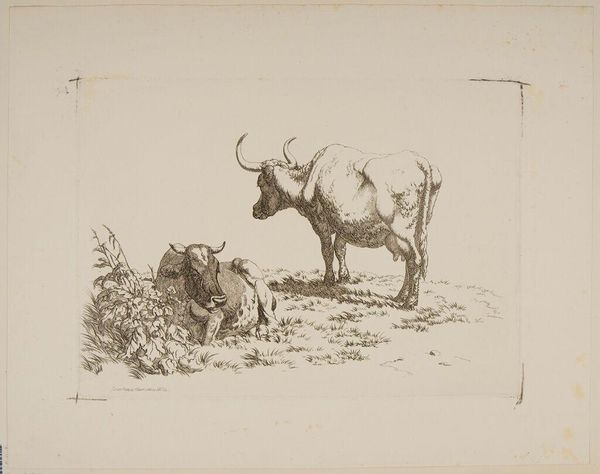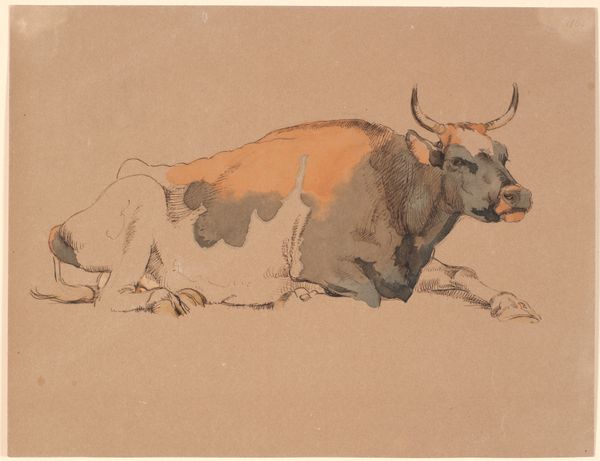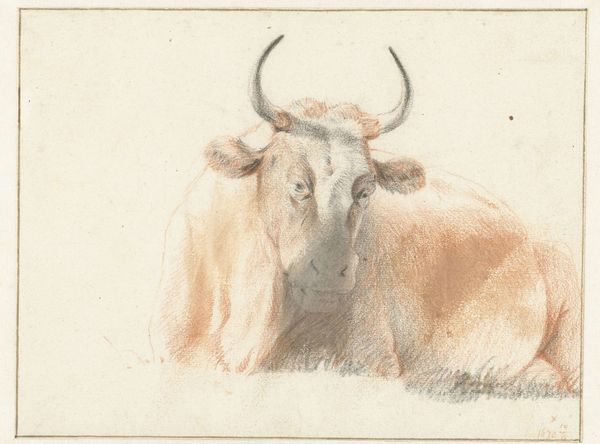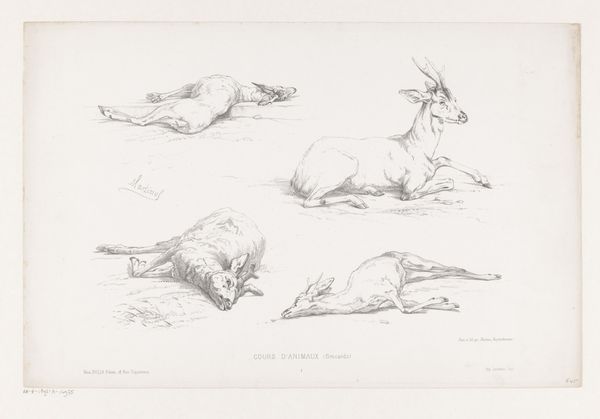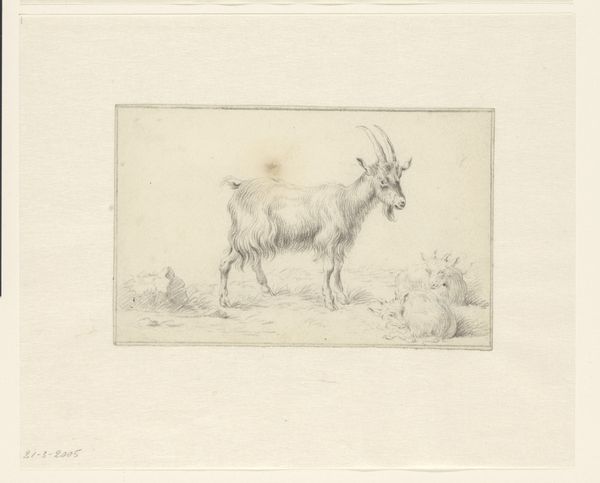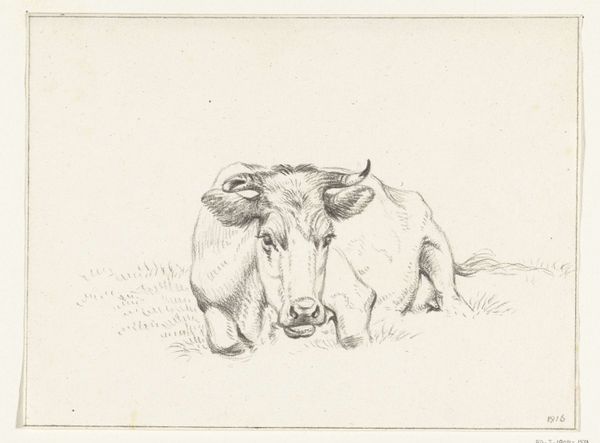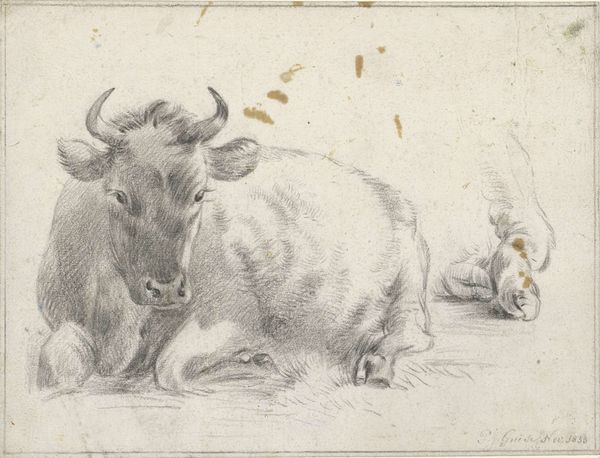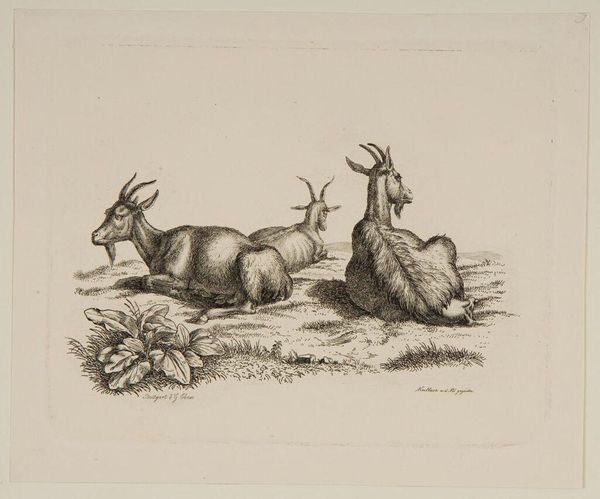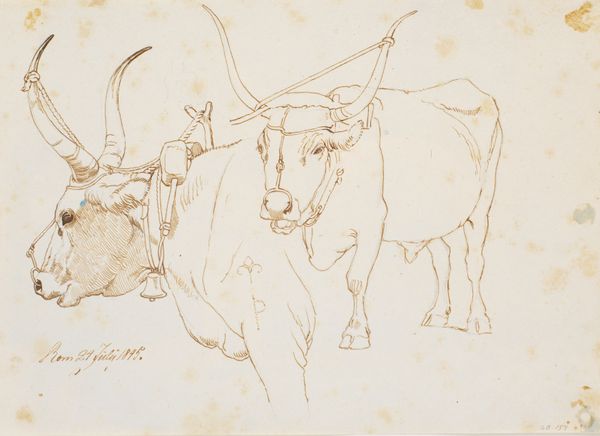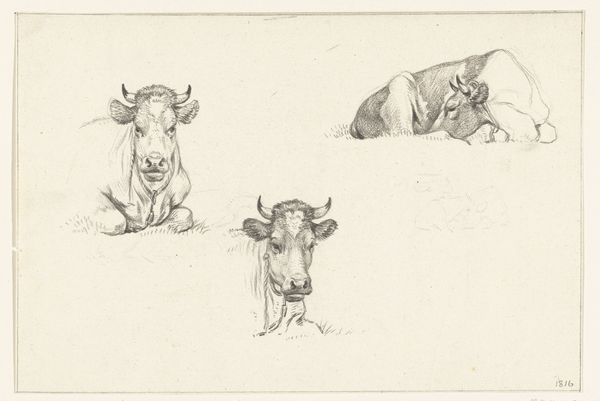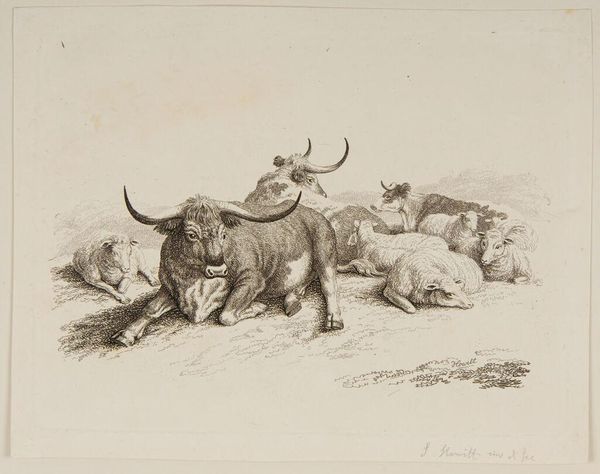
drawing, watercolor, pencil
#
drawing
#
pencil sketch
#
landscape
#
watercolor
#
pencil
#
watercolour illustration
#
genre-painting
Dimensions: height 107 mm, width 191 mm
Copyright: Rijks Museum: Open Domain
Editor: Here we have "Three Buffaloes Lying on the Forum" by Etienne de Lavallée-Poussin, likely created between 1750 and 1793. It's a lovely sketch done with pencil and watercolor, but what strikes me is the peculiar juxtaposition of these beasts within such an iconic setting. How would you approach an analysis of this piece? Curator: It's crucial to consider the materiality of the artwork first. The combination of readily available and relatively inexpensive materials like pencil and watercolor suggests that this was likely a preparatory study. Considering the means of production is also interesting here. Editor: A study? So it wasn't meant as a finished work itself? Curator: Possibly not. These materials allowed for easy transport and quick execution, essential for sketching from life or rapidly recording observations. The “genre painting” aspect reinforces this – depicting everyday scenes. The real question is why these buffalo in the forum? Is it an observation on the use, modification, or consumption of the space by others? Were these working animals? Editor: That's interesting. Perhaps it is not so much about the glory of Rome, but about the more quotidian aspects of daily life imposed on the Forum. Curator: Precisely. Consider also the labor these animals perform or the food they provide. The artist's choice to portray them resting forces us to confront this interplay between classical grandeur and agricultural pragmatism. Do the earthy materials themselves symbolize labor and earthly reality contrasted with the "high art" ideals of Rome? Editor: It certainly gives a different weight to this seemingly simple image. It's much more than a pastoral scene. Thanks for this alternative insight. Curator: Indeed, analyzing the artwork’s materiality unveils the socio-economic context, transforming what appears like a basic sketch into a multi-layered commentary on production, labor, and historical consumption.
Comments
No comments
Be the first to comment and join the conversation on the ultimate creative platform.

